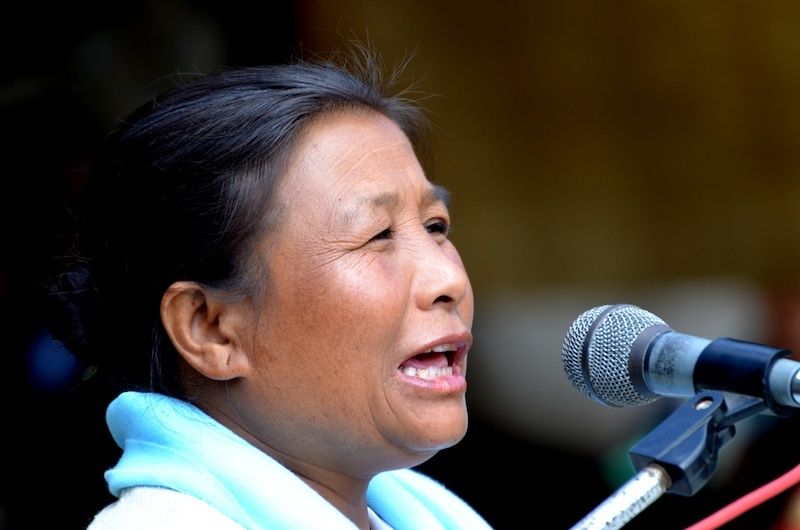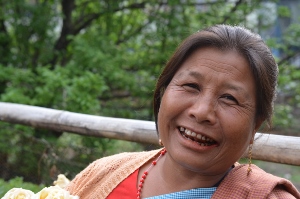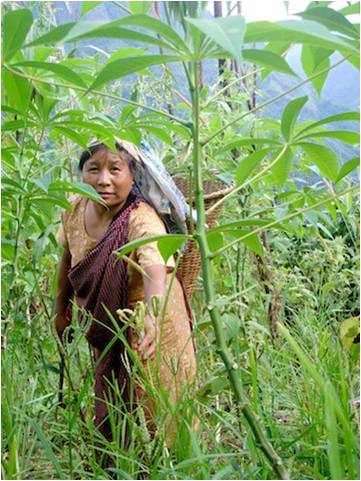Kong Bibiana Ranee hails from the small village of Nongtraw located approximately 45 kilometers from the capital of Meghalaya, Shillong. Her village is inaccessible by any form of transport except for a 2500 step descent into verdant forest area. A mother of four grown ups, she keeps herself busy not only with house hold chores and jhum cultivation but also takes part in community development works. She is an active member of the Khatarshnong Socio Organisation (KSO), an NGO, as well as the Village Development Council (VDC) and is a board member of NESFAS. Kong Bibiana was one of the first few community members of Nongtraw who recognized the importance of conserving millet in the traditional planting way of planting.
Kong Bibiana was one of the first persons, during the first Mei Ram-ew festival in 2010 that was organised by the Indigenous Partnership for Agrobiodiversity and Food Sovereignty, who voiced the concerns of her community about the risks of the dietary habits of the younger generation. It could be said that it was Bibiana and her community who were the first ones to rediscover the importance of millet. During the same event Bibiana and her community members showcased the Shah Shiahkrot (smilax ferox) a local medicinal root which is today listed in Slow Foods international Ark of Taste and has been
popularized both amongst the rural and urban crowd.
Bibiana has been active as an advocator of local food both at a regional, national and international level. She has participated in a custodian farmer workshop in Kathmandu Nepal in 2012, was invited for the international Terra Madre event in
Turin in 2010 and 2012 and also participated in the first Indigenous Terra Madre held in Jokmokk Sweden. She is also a very active Board member of NESFAS. Needless to say, Bibiana is also taking a lead role in the preparation towards ITM 2015 that will be held in her home state, Meghalaya.
Follow link to watch – A conversation with Bibiana Ranee:
http://www.youtube.com/watch?v=Njmeu6ycS2A
 Translate
Translate






